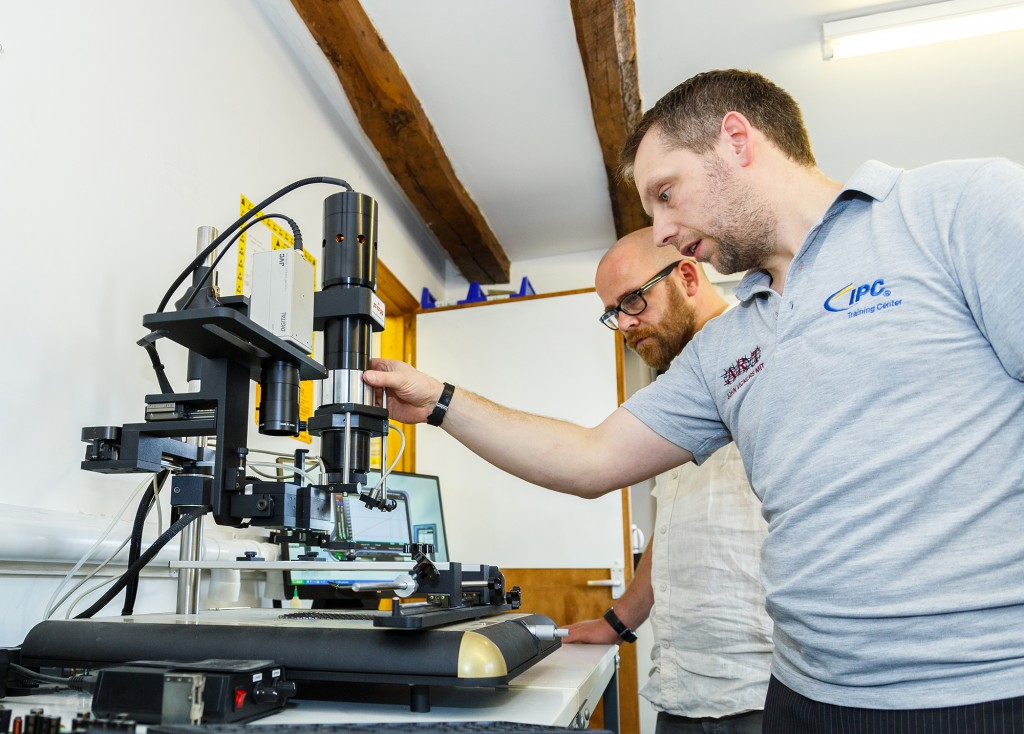Engineering is all about maintaining precision while keeping it efficient. In engineering, to ensure mechanical stability, certain joints of metal are subjected to either welding or soldering. Whereas welding is rather used for establishing stronger bonding between metal parts, soldering, as it provides comparatively weaker bonding between contacts, used quite frequently in field of electrical and electronics.
In the process of soldering, solder (it is alloy that has melting point lower than 450° C, which usually consists of tin and lead or tin and copper) is used to make the electrical connection between components and electrical path. Solder is melted by the application of hot soldering iron (it is a pointed metal tip, which is heated by means of electrically powered heating elements) over the connection of two contacts.
Gradually this solder cools down and provides sustainable electrical connectivity while holding it mechanically stable. Soldering electronics components together in above described way forms reliable electronic circuits. These circuits or PCBs, when connected altogether, makes for integrated gadgets such as mobile phone, laptops, smartwatch, and other devices consisting of integrated circuits.
Interested in More Information on Hand Soldering?
Call: +44 (0)1245 237083
Email: [email protected]
All electronic and electrical components can be connected through electrical wires or cables; however, it makes electrical connection more vulnerable to mechanical stresses and strains. To make connection more reliable and wriggle-free, which can last for longer period, practice of soldering was adopted.
To state that soldering is essential will mean putting it mildly. Soldering plays much more vital role in field of electronics. Soldering does not only provide perfected electrical connection, but it is significantly important to ensure robustness of electronic circuits. It contributes towards immensely improved functioning of subjected electrical or electronic circuits. Moreover, it is mistakenly believed that only aim of soldering is to provide better conductive path. Although it serves that purpose eventually, it is not the sole objective.
It is evident that solder paste fills the void between the component and electrical path. Since solder paste is better conductor of electricity rather than air, it results in improved electrical conductivity. In addition to that it improves heat dissipation because of the exact same reason. Material used in solder also provides strength against corrosion, which significantly improves lifetime of electronic circuits.
Soldering techniques has another key aspect that is critically important; ease at which it can be reversed. De-soldering any electronic or electrical circuits can be done hassle free with simplicity by reheating solder with soldering iron. However, despite of all these advantages hand soldering is more susceptible to soldering defects depending upon skillset and experience of performing individual.
In modern times soldering process has been evolved. Hand soldering is more prone to errors which is been gradually took over by more advanced mass-production process called wave soldering or reflow soldering for PCBs.
By means of that automation was introduced in art of soldering, which results in significant reduction in soldering defects. The final product matches the standards in every dimension, which in turns sustains far better electrical conductivity, heat dissipation, mechanical stability, corrosion resistance in PCBs.
Apparently, it goes without saying that more precise PCBs eventually contribute towards achieving desired final product with pre-set standards. In other words, practice of soldering brings precision, while keeping it efficient.



